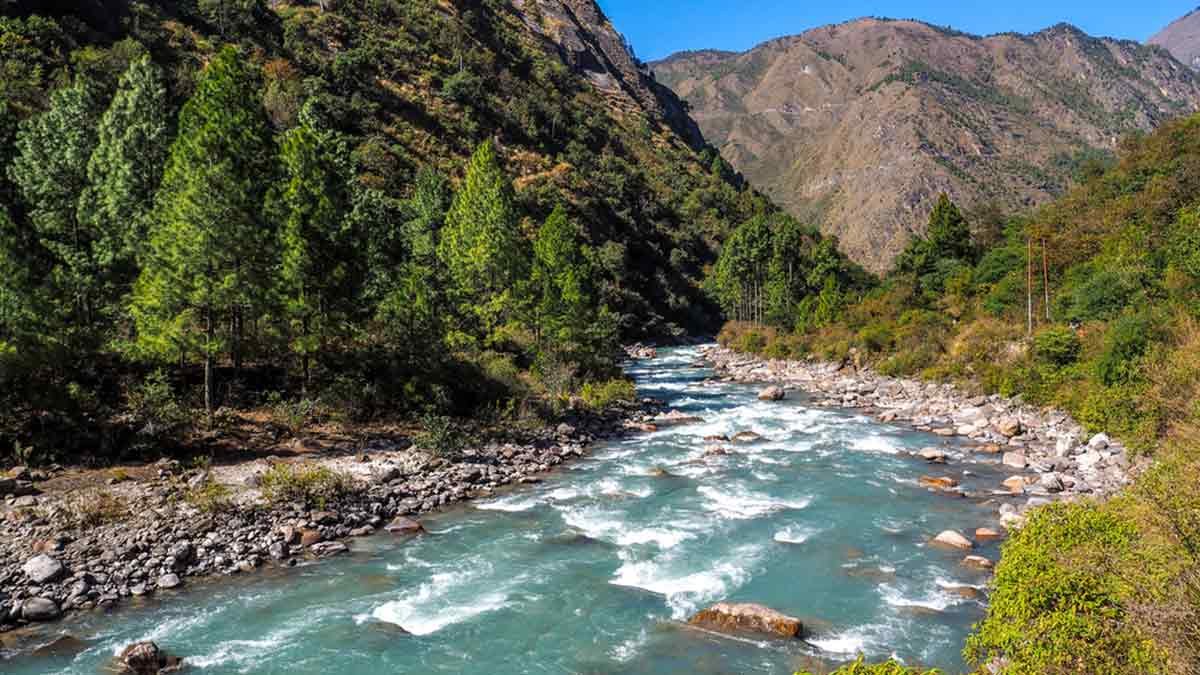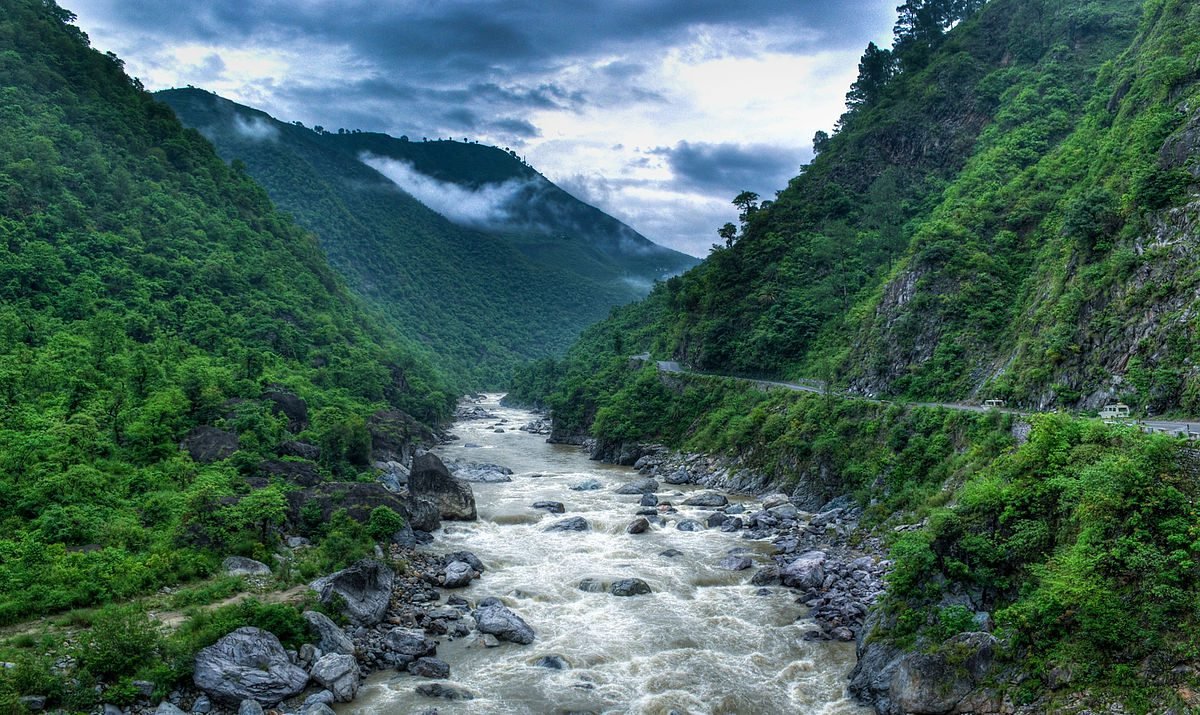The Kosi River: The Sorrow of Bihar

The Kosi River is called the “Sorrow of Bihar,” said to be one of India’s most significant and turbulent rivers. It originates from the Tibetan Plateau, flows through the foothills of the Himalayas, and then enters the plains of Bihar. This notorious river is known for its seasonal floods that have caused much damage and dislocation. On one hand, the Kosi forms the lifeline for millions, essential to agriculture and providing water supply. To understand the Kosi, its historical perspective, the impact of floods, measures toward flood control, and local community challenges need to be addressed.

Origin and Geography of the Kosi River
The Kosi River, appropriately titled the “Sorrow of Bihar,” originates in the Tibetan Plateau near the Mount Kailash region. The river travels a total distance of around 505 kilometres, or about 314 miles, through the Himalayan foothills before entering the plains of Bihar. From there, the river continues to meander through a complex network of tributaries and distributaries. Some single rivers are developed to form a river; for example, the Sun Kosi, Arun Kosi, and Tamur Kosi join to create a river that contains considerable volume and power.
The Kosi has always been the most vital river since very ancient times, supporting older civilizations and trade routes. Historical texts speak of its importance in terms of agriculture and irrigation; the river helped make the plains fertile through which it flowed. However, the Kosi is also known for unpredictable behaviour: changing its course and inundating huge swaths of the area during the monsoons.

Flooding has been an event seen repeatedly in the past of the Kosi River. It has consumed thousands of people, destroyed homes, and dislocated people in the area. The 2008 flood disaster is one of the most significant recent disasters that have affected over 3 million people and triggered extraordinary losses in terms of life and property. The uncharacteristic nature of the Kosi River has caused it to be both a source of sustenance and a reason for sorrow.
Mythology and Cultural Significance
In Indian mythology, rivers are personified as goddesses, and so, they hold a sacred place. The Kosi draws no direct comparison with the Ganges or Yamuna but is no less significant from the cultural and religious vantage of the good people of Bihar.
Traditionally, the Kosi River is often to be found in ancient texts and epics, such as the Mahabharata and the Puranas. According to this belief, the water of the river carries purity, and bathing in it will cleanse away the sins. In many local traditions, festivals and rituals, the river is celebrated because of its relationship with its community.

Villagers typically host ceremonies in honour of the Kosi, pleading for protection against floods. Prayers and offerings to the river are part of local culture, thereby sanctifying it. The destructive nature of the spirit of Kosi proves that the relationship is unbreakable between the river and the culture it thrives in.
History of Devastating Floods and Displacement
It has been a real story in its natural history because this flooding occurs during the monsoon season from June up to September. This happens due to heavy rainfall which creates the overflow of the river. During these floods, there is a huge loss of lives and property destruction, and millions of people get displaced. The Kosi flood of 2008 caused severe consequences because of the breach of the Kosi embankment in Nepal.
More than 3 million people were displaced, making it a humanitarian disaster. There would be destruction of infrastructural facilities, such as roads, schools, and healthcare facilities. Many families would lose their sole source of income due to crops being failed in the long run economically.

Recovery after such disasters will be for more years. Even if it involves multifaceted collaboration of government agencies, NGOs, and local communities, challenges still exist. Quite a number of families are hindered in efforts to rebuild their lives because of the loss of land and resources, thereby entrenching protracted displacement with food insecurity.
Flood Control Measures and Their Impact on Local Communities
The Kosi River has exhibited destructive flooding for a long period of time, and over the years, it has been part of numerous flood control measures with the construction of embankments, dams, and canals that ensure appropriate flow of the river and reduce the chances of flooding. The other significant flood control structure is Kosi Barrage, constructed in 1963. Its job is to regulate the river flow so that it may not cause flooding in the lower reaches. Though they have been successful in some respects, some of the criticism attached to these structures is as follows:

- Alteration of natural flow: Alteration in the natural dynamics of the river due to embankments has resulted in sediment accumulation and increased flooding in certain sectors of the river.
- Neglect of maintenance: Most of the embankments have not been maintained and hence have not met their intended goals during peak flood seasons.
- The local communities have been dislodged: The formation of dams and embankments has led to the displacement of the people who live along the banks, without being given proper compensation.
The Kosi River is one of the most important sources of irrigation for agricultural land in Bihar. However, subsequent flood control measures have disturbed changes in the supply of water as farmers face growing difficulties in regulating their crops and the balance between the risk of floods and supply of water becomes more precarious.

Irrigation. Although flood control measures are aimed at controlling surplus water bodies, their operation may upset irrigation schedules for some areas to dry up while others are flooded.
Crop loss. Flooding destroys crops; poor management of available water resources results in less agricultural production whose inadequacy causes food insecurity.
Agricultural Significance and Challenges
Despite the problems inundation causes, the Kosi River is of great significance to agriculture in Bihar. The upper plains are alluvial, enhanced by the waters of the river, which makes it a very productive land to grow crops like rice, wheat, and sugarcane. Additionally, seasonal floods often bring forth nutrient-laden silt deposited by the river onto the floodplains, which increases the fertility content of the soil. Until recent times, farmers relied on the Kosi, particularly in areas where rainfall was scanty.
However, this randomness of the river itself generates many problems for agricultural communities, such as:
- Unpredictable flooding: Kosi may flood anytime, hence the flooding is unpredictable but the farmers do not prepare for sudden flooding, so they cannot also schedule planting and harvesting activities.
- Degradation of the soil: Water flooding causes erosion of soils that degrades land fertility and negatively impacts long-term agricultural yields.
- Economic instability: A majority of the local farmers rely strictly on farming for survival. The crop damage from flooding can cause a severe economic shock and debt burden.

Adaptation Strategies
The different local communities are adopting varied strategies while trying to deal with the challenges posed by the Kosi River. They include:
- Crop diversification: Diversities of crops are being cultivated as the dangers of floods and soil degradation are at hand.
- Sustainable practices: Working on sustainable agriculture is a step toward promoting irrigation and healthy soil-healthy crops resilient to flooding.
- Community-based water management: More promising seems to be initiatives that involve local communities in the decisions about water management, which tend more toward a balance between agricultural needs and flood control.

Conclusion
The Kosi River is most often described as the “Sorrow of Bihar,” in recognition of the bipolarity of its association with nature, culture, and community. It was once historically a major lifeline for agriculture, but this river is also infamous for causing widespread devastation from its floods. Consequently, the development of management strategies that optimize both community protection and ecological preservation underscores the need to understand this duality of the Kosi. With further improvement in flood management capability, the need and voices of flood-dependent people should acquire paramount importance. To put it all together, Kosi reminds us of the age-old alliance between rivers and the people they served. With ‘sustainable practices’ along with ‘consensus-based water resources management’, hope will bloom soon when the same Kosi can give life instead of sorrow. This will require constant striving, innovation, and focus towards the development of community resilience if the agricultural value of the river is to be balanced with flood control. The Kosi River could work its way into becoming something like the “Hope of Bihar,” or at least a renewing force that helps the next generations.


